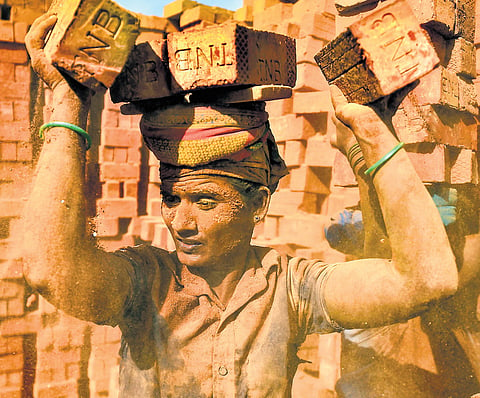

On December 15, 2023, the Ministry of Environment, Forest and Climate Change (MoEFC), Government of India, issued a notification amending Environmental (Protection) Rules, 1986, affecting brick kilns. The notification stated, “The existing brick kilns should convert to zig-zag technology, or vertical shaft or use piped natural gas as fuel in brick making, if they are not using this as of now.” The conversion has to be within one year (starting from 23.2.2023) for brick kilns falling within a 10 km radius of non-attainment cities and within one year of 23.02.2024 for other cities.
The amendment, approved by the Supreme Court, is a welcome step to attain National Ambient Air Quality Standards (NAAQS) in both types of cities—131 non-attainment cities (cities which, over five years, consistently violate the NAAQS for PM10 or N02) and remaining attainment cities. Interestingly, the first deadline of 23.2.2024 is over. Still, no clear information is available about how many units could convert to zig-zag technology and how many were ordered to close. In the Union territory of Jammu & Kashmir (J&K), where 560 brick kilns exist, 415 had applied for consent from the J&K Pollution Control Committee. Of these, nearly 48% could convert to zig-zag by January 1, 2024. Directions were issued for closing 125 brick kilns in J&K for violation during the calendar year 2023.
Implications of notification
To see the implication of this notification—one needs to know what proportion of brick kilns use the fuel-inefficient and highly polluting fixed-chimney bull trench kiln (FCBTK). What resources will these units have to incur to migrate to other technologies? And how quickly the brick kilns will be ready after the transition, as it might affect operations and livelihood. How will the funding for conversion be provided, given the fact that most brick kilns fall under the unorganised sector? Though High Draft Kilns (HDKs) and Vertical Shaft Brick Kilns (VSBKs) are comparatively more energy efficient technologies, they have limitations as there is a need for electricity/power backup in the case of HDKs and high initial cost and skilled workforce requirement in case of VSBK, making their replication difficult on a large scale. Meanwhile, zig-zag technology is easy for workers to use. Stacking the bricks in a zig-zag pattern converts the brick kilns by better insulating the walls and the floors. Correspondingly, this leads to a better quality of product.
Costs and benefits of zig-zag technology
Estimates exist that there are more than 30,000 operational FCBTKs in India, producing roughly 500 billion kilograms of fired clay products annually. Most of these are in the Gangetic plains and can be retrofitted into natural or high-draught zig-zag kilns. The cost of retrofitting varies from Rs 17.5 lakh to Rs 24.5 lakh for induced zig-zag and from Rs 25.5 lakh to Rs 38.5 lakh for natural zig-zag depending upon the condition of the existing kiln and the extent of retrofitting required. Retrofitting may require a minimum of three months. On the positive side, a 20% reduction in energy consumption through retrofitting all FCBTKs into zig-zag kilns would result in an annual saving of approximately 6 MT of coal, having a monetary value of Rs 3,000–5,000 crore. Besides coal savings, it will avoid releasing about 4,55,000 tonnes (T) of SPM and 55,000 tonnes of black carbon annually (i.e., 75% reduction in SPM and black carbon emissions) into the atmosphere.
Financing challenge
Barring a few large brick kiln owners, most small- and medium-sized operators would need access to finance for retrofitting. Several constraints exist that make conventional bank financing inaccessible to brick-makers. Some of these are: a) most brick kiln operators operate on leased land. Hence, land cannot be used for collateral; b) since a large part of the brick trade takes place in cash, with poor tax compliance, the balance sheets of brick enterprises do not reflect the accurate picture of the trade and in establishing their creditworthiness; c) many brick-kiln owners lack financial knowledge and the ability to prepare documentation to apply for a loan; d) and on the supply side, commercial banks have limited experience lending to the brick sector.
One solution for bridging this demand-supply finance gap is creating a Technology Upgradation Fund for the Brick Industry with the following two characteristics: a) allocation of dedicated funds for lending to the brick industry in the form of loans coupled with capital or interest subsidy; b) elimination of collateral requirements by operating the scheme under credit guarantee scheme for micro and small enterprises.
Use of piped natural gas (PNG)
Though PNG may be cheaper and cleaner, most brick kilns may still opt for zig-zag. This is because of the apprehension of reliable supply of natural gas in rural and peri-urban areas. Moreover, the cost implication of putting the infrastructure and ensuring its regular supply with safety aspects accounted for requires a proper study. Interestingly, some states like J&K have made using PNG for the new brick kilns mandatory. But existing units have the option to use either improved fuel such as coal, firewood and/or agricultural residues or PNG.
Vinish Kathuria
Professor & Director, IDS Jaipur
vinish.iitb@gmail.com